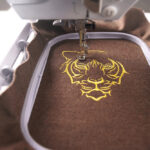I. Understanding Upcycling: What It Means and Why It Matters
II. Creative Ideas for Upcycling Your Dining Table
III. Step-by-Step Guide to Transforming Your Dining Table
Understanding Upcycling: What It Means and Why It Matters
Hey there! Have you ever looked around your home and thought, “What can I do with all this stuff?” If so, you’re not alone! Many of us have items that we no longer use or that have seen better days. That’s where the magic of upcycling comes in.
What is Upcycling?
Simply put, upcycling is the creative process of transforming waste materials or unwanted products into something of higher quality or value. It’s like giving a second life to old items, making them useful and beautiful again. Think of it as a blend of recycling and creativity, where the goal is to enhance rather than just break down.
Why Does Upcycling Matter?
- Environmental Impact: In our fast-paced consumer culture, waste is a pressing issue. Upcycling reduces the amount of waste that ends up in landfills. By repurposing items, we can significantly minimize our carbon footprint.
- Creativity and Innovation: Upcycling encourages us to think outside the box. It’s a chance to unleash your creativity, find unique solutions, and express your personal style. Who knew that an old wooden ladder could become a chic bookshelf?
- Saving Money: Instead of rushing to buy new furniture or decor, upcycling allows you to use what you already have. This not only saves money but also provides a fulfilling project that’s both enjoyable and productive.
- Sentimental Value: Upcycling can breathe new life into items that hold special memories. Whether it’s an old chair from grandma or a set of dishes from your travels, transforming these pieces can help preserve their sentimental worth while giving them a fresh purpose.
How to Get Started with Upcycling
If you’re inspired to dive into the world of upcycling, take a moment to assess what you have around your home. Here are a few tips to get you started:
- Inventory Your Items: Look for furniture, decor, or even clothing that you no longer use. Make a list of potential items that could be upcycled.
- Research Ideas: Browse websites, social media, or DIY blogs for inspiration. You’ll be amazed at the incredible transformations others have accomplished!
- Gather Your Tools: Depending on your project, you might need some basic tools: paint, brushes, glue, or even sewing supplies. Gather everything you need before you start.
- Start Small: If you’re new to upcycling, begin with a small project. It could be as simple as painting a tired picture frame or repurposing glass jars into stylish storage solutions.
Ultimately, upcycling is about finding joy in creativity and sustainability. So, if you’re ready to roll up your sleeves and transform some old items into beautiful masterpieces, you’re in for a rewarding journey. Happy upcycling!
Creative Ideas for Upcycling Your Dining Table
Are you looking at your dining table and thinking it could use a little love? Well, you’re in luck! Upcycling is a fantastic way to breathe new life into a piece of furniture that might feel a bit tired or outdated. Plus, it’s an eco-friendly choice that adds character to your home. Let’s explore some fun and creative ideas for upcycling your dining table!
1. Give It a Fresh Coat of Paint
A simple yet effective way to transform your dining table is by giving it a fresh coat of paint. Choose a color that complements your decor or go bold with something unexpected. Here are a few tips:
- Prep Your Surface: Sand down the table to ensure the paint adheres well.
- Choose the Right Paint: Use furniture paint or chalk paint for a durable finish.
- Seal It Up: Consider applying a sealant to protect your table from spills and scratches.
2. Create a Stenciled Design
If paint alone feels a bit plain, why not add some flair with a stenciled design? This method is great for personalizing your table. Here’s how to get started:
- Choose Your Stencils: Look for patterns that resonate with you, such as floral, geometric, or even quotes.
- Position Your Stencils: Use painter’s tape to hold them in place.
- Apply Paint Carefully: Use a sponge or brush to dab paint in and avoid smudging.
3. Repurpose as a Coffee Table
If your dining table is too large for your space, consider repurposing it into a coffee table. You can cut it down to size or even turn it into a stylish side table. Here’s how to do it:
Start by determining the ideal height; coffee tables usually sit around 16 to 18 inches high. Use a saw to adjust the legs (safety first!). You can add some wheels for a modern touch, making it easy to move around the room.
4. Add a Mosaic Top
For those who enjoy a bit of crafting, creating a mosaic table top can be a show-stopping transformation. You’ll need:
- Tiles or broken pottery
- A strong adhesive
- Grout to fill the gaps
Arrange your tiles in a pattern you love, glue them down, and then grout the spaces. It’s a fun weekend project that will give your dining table a unique, artistic touch!
5. Incorporate Mixed Materials
If you want something truly eclectic, consider mixing materials! Combine wood with metal accents, or even glass. You might take an old wooden table and add a glass top for a fresh, contemporary look. It’s a great way to highlight the original design while enhancing functionality.
In summary, upcycling your dining table opens up a world of creative possibilities. Whether you paint, stencil, repurpose, create mosaics, or mix materials, each idea is a chance to showcase your personal style while being environmentally conscious. So roll up your sleeves and get inspired; your dining table is ready for a transformation!
Step-by-Step Guide to Transforming Your Dining Table
Are you ready to give your dining table a fabulous makeover? Whether it’s a vintage piece that’s seen better days or a mass-produced table that lacks personality, upcycling can breathe new life into it. Follow this simple step-by-step guide to transform your dining table into a stunning centerpiece for your home!
Step 1: Gather Your Supplies
Before diving into your project, you’ll need to gather a few essential supplies:
- Sandpaper: Choose a medium-grit (around 120) for stripping old finishes and a fine-grit (around 220) for smoothing.
- Paint or Stain: Pick a color or finish that suits your style. Chalk paint is a great choice for a matte look, while wood stains can enhance the natural grain.
- Paintbrushes: Different sizes for varied applications. A foam brush can give you a smooth finish.
- Sealant: A clear coat finish will protect your work and keep it looking fabulous.
- Drop Cloth: Protect your floors from paint spills and sawdust.
- Tools: A screwdriver (if you need to disassemble), a paint roller (for larger surfaces), and possibly a power sander.
Step 2: Prepare Your Workspace
Find a well-ventilated area to work in, as you’ll be using paints and sealants that may have strong odors. Lay down your drop cloth to catch any drips and keep your space tidy. If you need to move your table, enlist a helper; dining tables can be heavy!
Step 3: Clean and Strip the Table
Start by giving your table a good cleaning to remove any dust and grime. If there’s an old finish that needs to go, use your sandpaper to gently strip it away. Remember to work with the grain of the wood to avoid scratches. Once you’ve stripped the surface, wipe it down with a damp cloth to remove dust particles.
Step 4: Paint or Stain Your Table
Now comes the fun part! If you’re painting, apply a primer first—especially if your table is dark or has a shiny surface. Once the primer dries, use your paintbrush to apply your chosen paint in even strokes. If you’re using stain, apply it with a cloth, wiping off excess for a more even finish. Allow it to dry completely, which may take a few hours or overnight.
Step 5: Add a Protective Sealant
Once your paint or stain is dry, it’s time to seal the deal! Apply a clear sealant with a clean brush, using long strokes to cover the surface evenly. This will protect your newly finished table from scratches and spills. Let the sealant cure as per the manufacturer’s instructions—this could be a day or two, so be patient!
Step 6: Style Your Table
Now that your table is transformed, it’s time to style it! Consider adding a table runner, some chic placemats, or a centerpiece that reflects your personality. Don’t forget to share your beautiful creation with friends and family—they’ll be amazed at what you’ve accomplished!
And there you have it! With a little creativity and effort, you’ve successfully upcycled your dining table into a stunning focal point that you can cherish for years to come. Happy decorating!





Comments